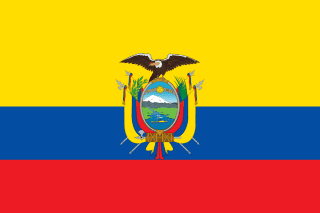Discover essential maritime information about Ecuador, a coastal country in South America bordered by the Pacific Ocean. This detailed guide presents major port infrastructures, navigation conditions along the Ecuadorian coast, and maritime safety measures in place. Perfect for maritime professionals and logistics operators seeking to optimize their operations in this strategic region. Ecuador, with its direct access to international shipping routes, plays a crucial role in maritime trade on the west coast. Learn about local regulations, available port services, and geographical features that influence navigation and safety at sea.

Explore the strategic ports and maritime infrastructure of ecuador

Essential maritime information about Posorja Port port for sea professionals

Essential maritime information about Bahia De Caraquez Port port for sea professionals

Essential maritime information about San Lorenzo Port port for sea professionals

Essential maritime information about Salinas Port port for sea professionals

Essential maritime information about La Libertad Port port for sea professionals

Essential maritime information about Esmeraldas Port port for sea professionals

Essential maritime information about Manta Port port for sea professionals

Essential maritime information about Guayaquil Port port for sea professionals

Essential maritime information about Puerto Bolivar Port port for sea professionals
Explore the strategic ports and maritime infrastructure of ecuador
Located on the west coast of South America, Ecuador plays a strategic role in maritime trade thanks to its direct access to the Pacific Ocean. The country has several important ports, the main one being the port of Guayaquil, one of the largest and most dynamic in the region. This port is crucial for Ecuadorian imports and exports, handling a large part of the national maritime traffic. Besides Guayaquil, other ports like Manta, specialized in fishing and smaller cargos, contribute to the local maritime economy. The state has also invested in modernizing port infrastructures to improve capacity, safety, and operational efficiency.
Ecuadorian ports are equipped to handle a variety of goods, including agricultural products, minerals, and manufactured goods. This diversity is essential to support the country's economic growth and facilitate access to international markets. Furthermore, Ecuador's geographical position, close to the geographic equator, influences climatic and oceanic conditions, requiring constant adaptation of port infrastructures to ensure the safety and smoothness of operations.
Navigation along the Ecuadorian coast is characterized by specific geographical and climatic factors. The presence of ocean currents, tidal variations, and seasonal weather conditions such as the rainy season affect the safety and planning of maritime routes. Ecuador's exclusive economic zone extends 200 nautical miles offshore, providing significant space for commercial fishing as well as for commercial and recreational navigation.
Regarding regulations, Ecuador strictly applies international conventions on maritime safety, pollution prevention, and the management of maritime relations. Port authorities work closely with maritime operators to ensure compliance with environmental and safety standards. Moreover, the country implements surveillance and control measures to combat illegal fishing and protect its maritime zone. These regulatory aspects make navigation safe while preserving marine resources essential for the economy and the local ecosystem.
Ecuadorian maritime regulations also include specific requirements for foreign vessels, including registration, inspection, and compliance with local laws upon entering territorial waters. Ecuador actively participates in regional initiatives to strengthen maritime security and sustainable management of marine resources in the Eastern Pacific.